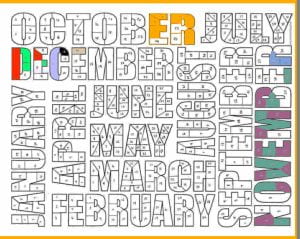
We started the Wisdom Tales project four months ago and it was a great experience. The one to two page tales were divided by where they came from, China, India, Europe, Africa. We read and summarized the stories and determined their morals on Google Slides. I recognized some of the stories, like Paca and Beetle, which felt like the Tortoise and the Hare, and had never heard of others. Sometimes we would act the stories out and read them in front of the class, which was very entertaining. At the end, we picked our favorite story and created a one page comic depicting the tale.
The story I chose is called The Useless Tree from China. In this story, loggers, carpenters, and lumberjacks come to a forest. They cut down all the trees in the forest but ignored the “useless” tree because it was knotty and twisted. However, the children of the village play on the tree now and the old men rest beneath it. A villager exclaimed one day, “This tree is so useless! If it was useful, it would not be here!” Another replied, “If it was ‘useful’ we would not be able to gather around it and the children would have nowhere to play. It is useful, in its own way.” I said that the moral of the story was that everything has a use. The reason I chose this story is because I thought that it had a good message and the pictures would be fun to draw.
Right before we started drawing our comics, Mr. Peck visited our school. He is a professional artist and also one of my classmate’s dad. Mr. Peck showed us how all characters start from just simple shapes like circles and triangles. The example he gave us was Little Red Riding Hood. Red was depicted as a red triangle. He explained how to make the trees slanted to give the forest, and the reader, an ominous feeling. One thing I learned from him is that the shapes and colors you give your characters are really important. A smooth and circular shaped character will feel friendly and a bit protective while a character with a lot of angles might feel mean and stubborn.
I created my comic one hundred percent online, using Sketchbook and Comic Life 3. I was already familiar with Sketchbook and had used it many times before and I really like the app. Sketchbook is an online drawing app. The layers feature was very helpful, when illustrating my comic. I had never used Comic Life 3 before, and I got a bit frustrated with it, at the beginning. However, after playing around with it I got the hang of it. I traced the useless tree and loggers off of images, but added my own color. The wisdom tales project was so much fun, and I’m really proud of my finished product!


